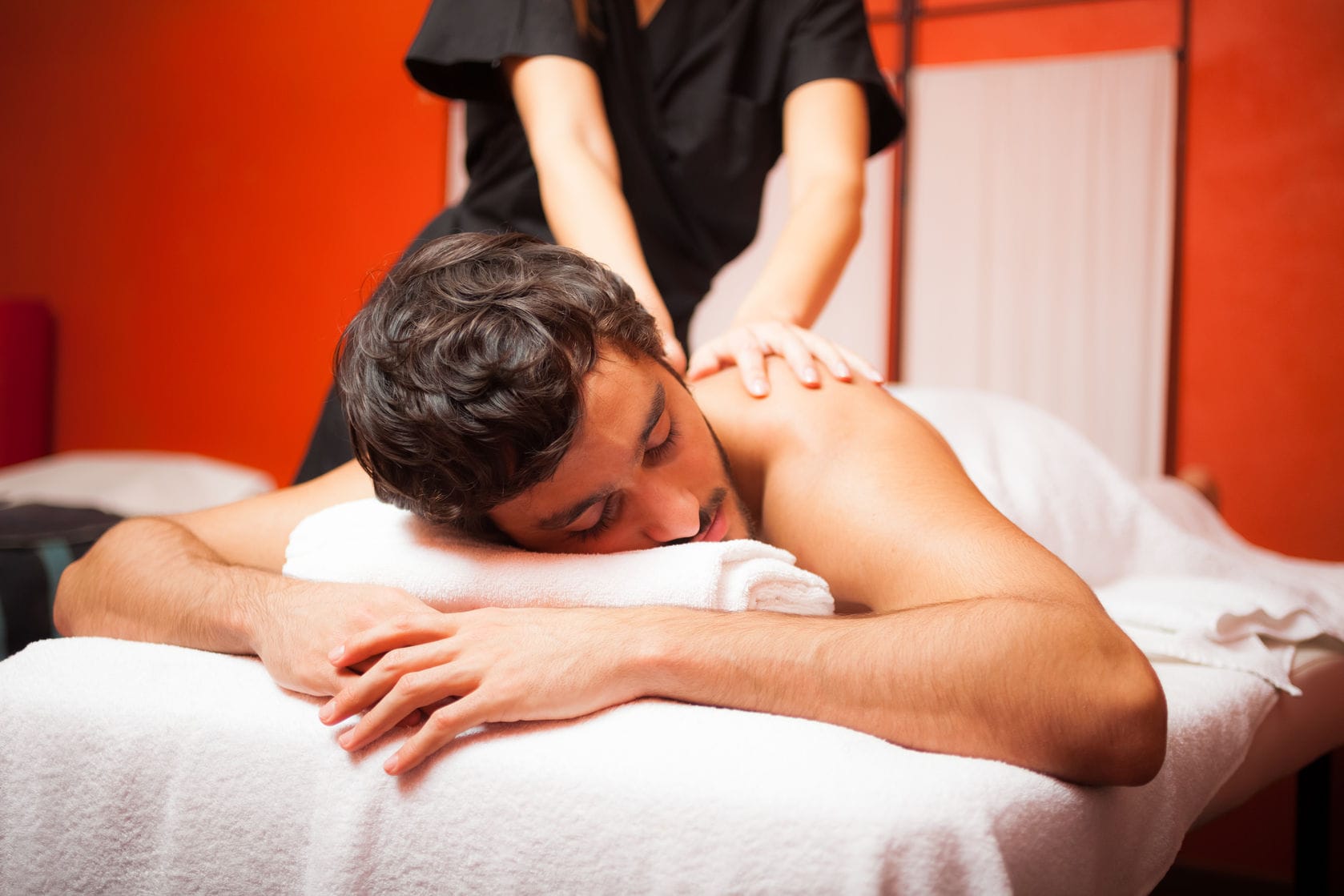
Licensed Massage Therapist, Amy Montia, explains Physio Logic’s unique approach to Massage Therapy, the variety of different techniques used, and the benefits of having manual therapy added to your treatment plan.
Massage Therapy is part of patient rehabilitation and wellness at Physio Logic. Our goal is to help you feel less pain and discomfort, and to restore functional movement by methodically working into soft tissue restrictions.
What Type of Massage Therapy Does Physio Logic Provide?
Our massage therapy is orthopedic-based. It Is not a specific technique or style, nor is there a standard pressure, depth or intensity that has to be used. Instead, we apply a constellation of techniques according to the patient’s individual symptoms, physical assessment and injury/medical history. Basically, we’ll work into the areas that the patient perceives as feeling “tight.” We will then work into the areas that we find to be tight, stuck or restricted. This is because the chronic tightness a patient feels could be locked in by tightness, restriction or weakness elsewhere in your body. Examples are: achilles tendon pain connected to adductor tightness; low back/SI joint pain connected to a pronated foot; left knee pain connected to a tight right hip; or neck pain connected to a tight thoracic spine. At Physio Logic, Massage Therapy is also referred to as Manual Therapy. This distinguishes our work from that of spa massage or relaxation massage.
What Techniques Do We Use?
Most commonly used are myofascial release, petrissage, muscle stripping, trigger point release, cross fiber friction and sustained compression, as well as active and passive stretching. If there is swelling or edema present, or traumatic injury in acute phase, light effleurage and gentle compression is done to direct blood flow and lymph return without disrupting the healing process. Techniques are applied slowly and with graded intensity to minimize pain and discomfort. All LMTs are different, and each has a different touch and technique to incorporate into sessions. For example, I often incorporate ART (Active Release Technique), shiatsu meridian acupressure, and Thai massage stretches into my sessions. See our Website bios or inquire within for more information about each of our individual massage therapists.
Is It “No Pain, No Gain?”
No, not necessarily. Discomfort is to be expected as pain spindles start working again, nerves are released from being compressed, and adhesions are broken up. With that said, effective work should never leave you feeling destroyed, defeated or exhausted after a massage. There’s rarely any justification for extremely painful massage. Remember that our goal is to reduce your pain, not inflict more. If you ever feel like the pain is too much, let your therapist know.
A massage session is a good opportunity to become more acquainted with your breathing patterns. Practicing slower, deeper controlled breaths (called diaphragmatic breathing) is a great way to help your body to relax, and to make the session more effective. Most of us breathe too shallow, too rapidly, and we overuse the muscles around our neck and rib cage to bring oxygen into our body. Diaphragmatic breathing helps decrease chronic muscle tension in our neck, shoulders and back, and it reduces pain perception. In fact, a study published in the April 2010 issue of Pain, “demonstrated that controlled deep breathing at a slowed rate significantly reduces feelings of pain in people with chronic pain.” Slower deeper breathing helps to dial down the sympathetic nervous system response (fight-or-flight response) and activate the parasympathetic nervous system (responsible for the relaxation response).
Just Breathe…
Here are some simple steps to help improve your breathing pattern:
-Inhale slowly through your nose as if taking in crisp clean mountain air…
-Feel your belly inflate like a beach ball. Feel a gentle stretch around your belly button.
-Hold the inhale for a brief moment.
-Exhale slowly through your mouth like you are gently blowing out candles…
-Let your belly slowly deflate. Feel your abdominal muscles gently pull your sides in toward your midline and your belly button toward your spine.
-With each exhale, try to prolong the exhale a second longer. At first you may feel the urge to cough. That will go away the more you practice.
-Try to make your exhales last a second or two longer than your inhales.
-Aim for 5-7 second inhales and 7-9 second exhales.
If you feel like massage helps you, but the relief doesn’t “hold,” consider doing massage therapy combined with Physical Therapy, chiropractic care, or a corrective exercise plan (if you are not already doing so). Each of the Massage Therapists work directly alongside the Physical Therapists and Chiropractors at Physio Logic. Physical Therapy patients receive Manual Therapy as part of their treatment plan at every visit and are encouraged to schedule supplemental massage sessions and post-care maintenance sessions. Chiropractic patients and Pilates clients can schedule massage therapy sessions to complement whatever they are working on with the Chiropractors or Pilates Instructor. Physio Logic Massage Therapy is available to anyone!
You don’t have to be a Physio Logic patient or Pilates client to book a massage. For more information on how you can benefit from Massage/Manual Therapy, schedule an appointment with one of our qualified Licensed Massage Therapists today. Fill out the form below to get started.